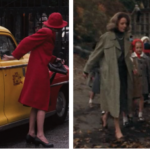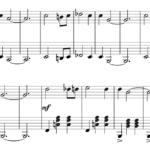“Till Death Do Us Part”: Michael’s Marriage to Apollonia and the “Corleone” Way
By Julia Reilly
Michael’s marriage to Apollonia, halfway through The Godfather, marks a metaphorical marriage to Sicily and the ways of his father. By partaking in an intensely traditional wedding with an equally traditional Italian bride in a town that bears his family’s name, Michael is wedding himself to the Old World of his father’s generation and to the violent path that he had previously rebelled against. Yet he renews his commitment to his family in his own way — and the terms of this commitment are signaled by the contrast between the two weddings in the film (Michael’s and Connie’s) and by the development of his character between the two ceremonies.
The two weddings in The Godfather differ from one another greatly. Unlike his sister Connie’s sumptuous and lighthearted reception, Michael’s marriage to Apollonia is old-fashioned and deeply Sicilian. While Connie’s wedding features Sicilian traditions, like her wedding purse and songs sung in Italian, it does not diverge too sharply from a normal (though lavish) American wedding. The Corleones showcase their prosperity and well-connectedness through the wedding, and Connie’s towering cake is the epitome of extravagance and excess.
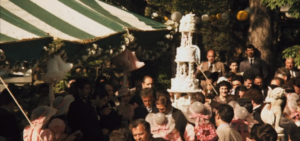
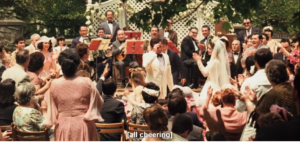
Connie and Carlo’s wedding is bright and loud. Wine flows freely, and several characters appear to be drunk. The scenes of their celebration utilize warm, vivid colors and upbeat music accompanied by laughter, excited shouts, and singing, while Michael’s wedding looks muted and earthy, scored by a band playing a song that recalls the slow and almost mournful Godfather theme. Where Connie’s wedding features posy pink bridesmaids’ dresses, a performance from celebrity Johnny Fontane, and lots of dancing, Michael’s nuptials are quiet, small, and more serious, in the “Old World” fashion.
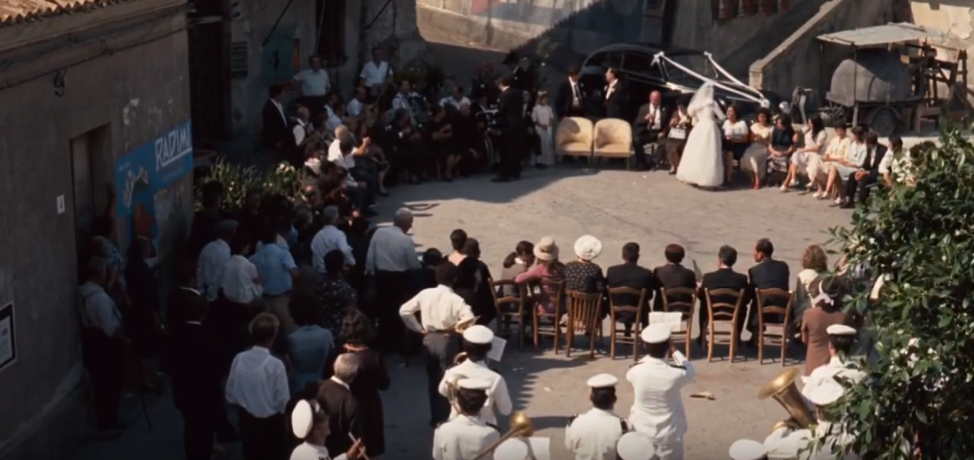
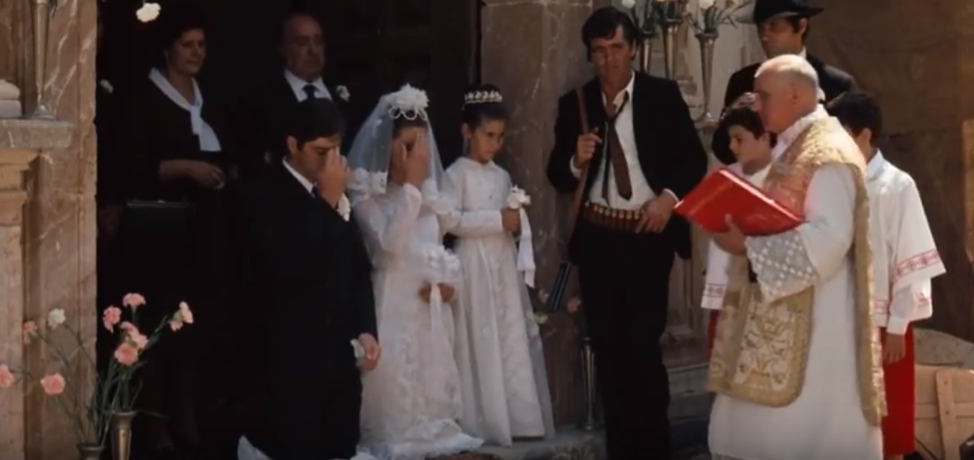
As noted in the screenplay, Michael’s wedding is “the same in feeling and texture as it might have been five hundred years ago,” with “all the ritual and pageantry, as it has always been, in Sicily.” This deeply Sicilian wedding illustrates Michael’s complete immersion in the Sicilian culture. The priest and the wedding ceremony, rather than the reception, take center stage, and Michael and Apollonia, though joyful, wear formal expressions. Their wedding is a sacred, holy union, and while the couple and the bride’s family will soon celebrate, the religious sacrament is the undisputed focus of the day. This emphasis on reverence and religion is not displayed at Connie’s reception, where young women are playing guessing games about the size of someone’s manhood and Sonny is having extramarital sex with a bridesmaid upstairs.
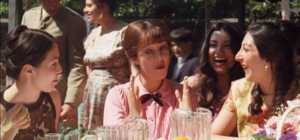
In Michael’s wedding scene, a beautiful long shot of the small Italian town follows the bride and groom’s procession, showcasing both Corleone’s natural richness in color and its plain and battered buildings. Michael’s journey to Sicily is a journey back to his family’s roots, and this shot shows audiences just how different his home in America is from the region that gave the Corleone family their name. In New York, the Corleones live luxuriously. Immensely successful as a result of their illegal deeds, they are a family of wealth, but one somewhat isolated from the land and their community. Only the important and influential are permitted to attend Connie’s New York wedding, but Michael’s Sicilian wedding invites the whole town to take part in tradition and festivity.
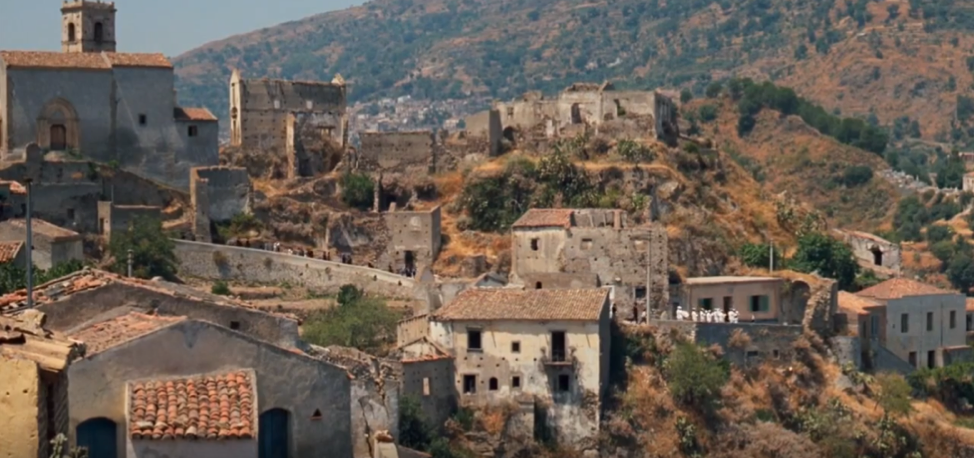
Set against the backdrop of poor, dilapidated Corleone, Michael and Apollonia’s reception takes place among urban grime, in a circle of mismatched chairs — a stark contrast to Connie’s ornate celebration. Apollonia engages with her wedding guests through Sicilian traditions, her incredibly elaborate hairstyle and ornamental veil reflecting the monumental nature of the day in a way that the homely reception area does not. This reception is about family and community, about honoring the memory of those who came before by celebrating in the old way. The reception’s traditions are like valuable heirlooms, passed down from each new couple to the next; they join the community in a bond that matches the sacredness of the earlier ceremony, even though they are not religious sacraments.
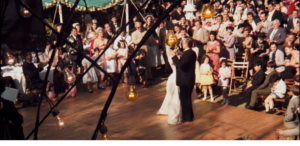
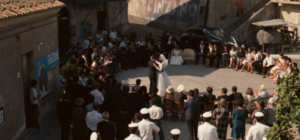
The differences between The Godfather’s two weddings suggest the materialism of American culture — how the opulence of “The Don,” a product of his success in America, has distanced him from the family-based Italian way and the poverty-stricken town of Corleone.
Aside from providing important commentary on the Corleone family and culture, the disparities between the two marriage celebrations highlight the many ways Michael has changed since the beginning of the film. For Connie’s wedding, Michael dons an American military uniform, signifying not only his alignment with America and its laws and customs, but also, and more notably, his history of risking his life to maintain them.
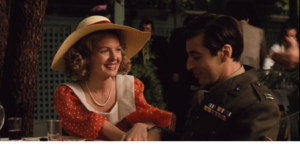
When Kay, a talkative and inquisitive all-American beauty (dressed in a bright and patriotically-hued frock), questions Michael about his family, he does his best to answer only vaguely and often attempts to direct their conversation away from the topic. When asked about Luca Brasi, Michael simply tells Kay that he “helps my father out sometimes.” Kay eventually pushes Michael to tell her the full story about Brasi and Johnny Fontane. He gives in, telling the tale solemnly and in graphic detail, taking great care to distance himself from the violent act he is speaking about. Michael concludes the story with the statement “That’s my family, Kay. It’s not me”: he does not simply refuse to participate in the “family business,” but also deeply disapproves of it. As Kay and Michael sit together, Tom Hagen informs Michael that his father is looking for him. He does not get up or even attempt to look around for his father, but instead simply continues his conversation as if nothing had happened.
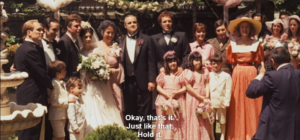
Michael and Kay are carefree and giggly when not discussing family matters, holding hands and sitting close together in their own little world like high school sweethearts. They isolate themselves from the rest of the party, only interacting with family members if they approach them first. When Michael is brought over for a family picture, he insists Kay join in, perhaps subconsciously to associate himself more closely with her than with the Corleone family. Kay is an independent, outspoken American woman—the opposite of the submissive female Corleones, most notably the delicate and powerless Connie.
At his own wedding later in the film, Michael is much more serious and traditional, embracing both his family and his heritage. He seems comfortable in the Sicilian way and looks perfectly natural during the ultra-traditional wedding. Michael has traded in the military uniform for a modest yet formal suit, looking dapper save for his badly bruised face. The attempt on Don Corleone’s life has ignited a change deep within Michael, and the darkening mark under his eye physically indicates the alterations taking place inside him emotionally.
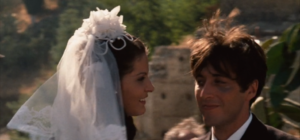
At the ceremony, he genuflects reverently, then sweetly but solemnly offers his new bride his arm as they stand up. Michael is serious and formal as he processes through the city with his wife, wearing a dignified expression that matches the rich and ceremonious wail of the music. As Michael continues to walk, it is increasingly apparent that he has become one with Sicily.
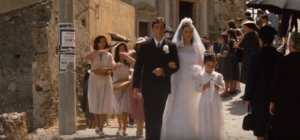
He shares a moment with the young flower girl: he smiles at her and she smiles back, as if acknowledging him as a welcome member of the family and the community. Michael walks with his bride through the town that has now become his home, not looking like an out-of-place foreigner, but like a man who has strolled these winding paths all of his life. As Michael walks down the dirt roads of his father’s world with his new bride, he follows in his father’s footsteps, both literally and figuratively.
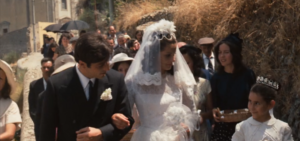
The changes Michael goes through during the film, visible through the differences in his behavior at the two weddings, begin with the attack on his father. At the hospital, Michael gets in an altercation with (and is physically assaulted by) a corrupt cop while trying to protect his already injured father from being “finished off” by hit men. From this moment on, both he and the family’s enemies view him not as an innocent bystander, but as an active participant in the Corleone family.
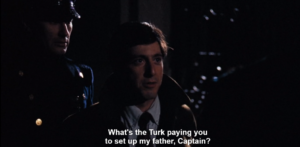
Michael wants safety for his father and revenge against the Tattaglias who tried to assassinate “the Don,” and to ensure that safety, he becomes not just an active member of the family, but an active member of “the business” as well, volunteering to shoot and kill Sollozzo. When Michael gets to the restaurant where the hit will take place, he is noticeably uneasy, but he doesn’t change the plan; his motivation is strong enough to neutralize his previous moral ideals. After Michael murders Sollozzo and the cop McCluskey, there is no turning back.
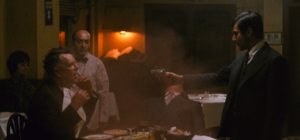
The very violence he condemned at Connie’s wedding now his own, Michael goes to Sicily to hide. While killing for the family was the first major step in Michael’s transformation, he continues to undergo changes during the journey to his father’s roots. In the town of Corleone from which his family took its name, Michael is inducted into the Old-World life and the Sicilian way. The derelict buildings and sprawling countryside through which his father once walked are Michael’s new home: the ultra-modern, all-American man whom audiences were introduced to at the start of the film is now nowhere to be found. In Sicily, Michael embraces his roots and his culture, connecting with his Italian heritage in a way viewers have not yet seen.
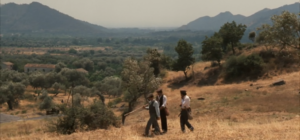
When asking Apollonia’s father permission to court her, Michael uses his father’s power to his advantage in a way he never would have before, saying “My name is Michael Corleone. There are people who would pay a lot of money for that information, but then your daughter would lose a father instead of gaining a husband.” Michael makes Fabrizio stand and translate for him as he speaks with a stately air, showcasing his power and commanding respect from the man who only moments ago regarded him as a rude and immature boy. Michael’s earlier relationship with Kay is featured in dialogue-heavy scenes, but his growing bond with Apollonia is shown through montage, with smooth, orchestral music and almost no words shared between the couple.
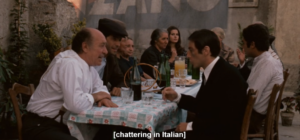
Michael’s courting of Apollonia is patient, gentle, and traditional—much less modern and American than his previous romantic interactions with Kay. Michael gains the approval of Apollonia’s family and father before spending time with her alone, in customary Sicilian fashion. Apollonia and Michael are united by culture, tradition, and loving glances, their connection deepening slowly but fiercely. By the time Michael marries Apollonia, he seems a completely different man than the one who attended Connie’s wedding. Michael has become a true Corleone (embracing both Italian culture and mob affiliation), and his marriage to Apollonia signifies Michael’s official acceptance of this change and what it means for his future.
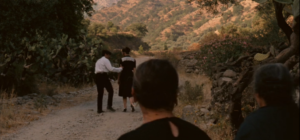
When Michael marries Apollonia, he is wedding himself not just to her, but to Sicily and his father’s values. He is also rejecting Kay and the American way: due to the chain of events prompted by the attempt on his father’s life, Michael is on the road to becoming the new Don, and he will need support from a suitable wife. Though the love between Michael and Apollonia is portrayed as gentle, patient, and true, Apollonia is certainly attractive to a future mafioso not just for her kindness and beauty, but for her subservience. Where Kay is white, nosy, and modern, Apollonia is Italian, submissive, and traditional.
Michael’s pre-Sicily relationship with Kay spoke to his rebellion against the “family business,” and when he trades Kay in for a more obedient model, Michael is no longer rebelling against, but rather fully embracing, his father’s lifestyle. He takes part in an Old-World style wedding, far more traditional than Connie’s, to shed the vestiges of his American ways and become a true Sicilian. By marrying Apollonia, Michael accepts the Corleone name, and everything that comes with it.


